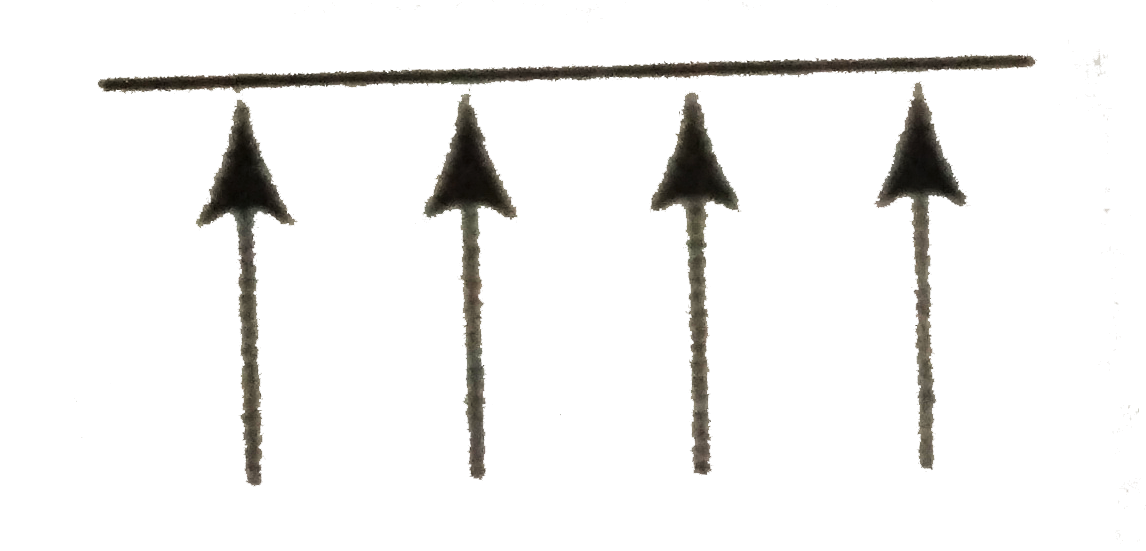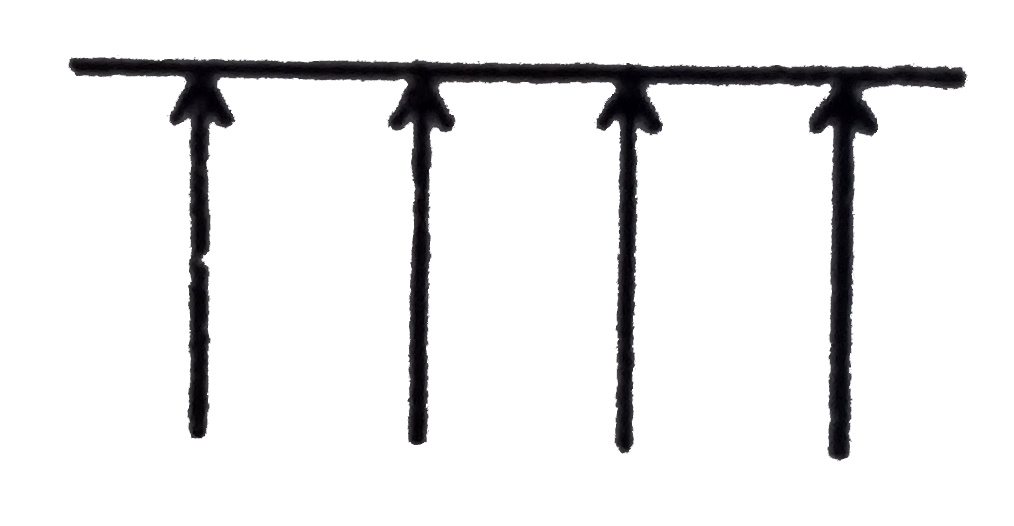A plate of mass 10g is in equilibrium in air due to the force exerted by a light beam on the plate. Calculate power of the beam. Assume that the plate is perfectly absorbing.

For equilibrium the force exerted by the light beam should balance the weight of plate.
Topper's Solved these Questions
- PHOTOELECTRIC EFFECTBOOK - CENGAGE PHYSICSCHAPTER - PHOTOELECTRIC EFFECTEXERCISE - Examples
8 Videos
- PHOTOELECTRIC EFFECTBOOK - CENGAGE PHYSICSCHAPTER - PHOTOELECTRIC EFFECTEXERCISE - Exercise 3.1
15 Videos
- NUCLEIBOOK - CENGAGE PHYSICSCHAPTER - NUCLEIEXERCISE - QUESTION BANK
59 Videos
- RAY OPTICSBOOK - CENGAGE PHYSICSCHAPTER - RAY OPTICSEXERCISE - DPP 1.6
12 Videos
Similar Questions
A plate of mass 10gm is in equillibrium in air due to the force exterted by light beam on plate. Calculate powder of beam. Assume plates is perfectly absorbing.

View SolutionA plate of mass 20mg is in equilibrium in air due to force exerted by light beam on the plate as shown is the figure. Calculate the power of the beam (in mega-watt) if the plate is perfectly absorbing.
'(##CEN_KSR_PHY_JEE_CO28_E01_018_Q01##)'
View Solution
Knowledge Check
What is the force exerted by a photon beam of intensity 1.4kW/m2, if it falls on a perfectly absorbing disc of radius 4 metre ?
A8.35×104NB108NC8.8×10−8ND2.35×10−4NA narrow beam of monochromatic light of wavelength λ emitted from a source of power P is propogating in the positive x-direction. After being reflected from a perfectly reflecting plane mirror of area vector →A=A(−ˆi−ˆj), the beam falls on a metal plate of surface area A[→A is along outward normal at mirror]. the force exerted by light beam on the mirror is →F and Δ→p is change in momentum of each photon then [cis speed of light in vacuum]
AΔ→F=Pc(ˆi+ˆj),Δ→p=hλ(−ˆi−ˆj)BΔ→F=Pc(ˆi+ˆj),Δ→p=hλ(ˆi+ˆj)CΔ→F=Pc(−ˆi−ˆj),Δ→p=hλ(−ˆi−ˆj)DΔ→F=Pc(−ˆi−ˆj),Δ→p=hλ(+ˆi+ˆj)In Young's double slit experiment, the fringes are displaced by a distance x when a glass plate of one refractive index 1.5 is introduced in the path of one of the beams. When this plate in replaced by another plate of the same thickness, the shift of fringes is (3/2)x. The refractive index of the second plate is
A1.75B1.5C1.25D1
Force Exerted By A Light Beam On A Surface
View SolutionA parallel beam of monochromatic light of frequency v is incident on a surface. Intensity of the beam is I and area of the surface is A. Find the force exerted by the light beam on the surface for following cases–
(i) the surface is perfectly absorbing and the light beam is incident normally on it.
(ii) the surface is perfectly reflecting and the light beam is incident normally.
(iii) the surface is perfectly absorbing and the light beam is incident at an angle of incidence θ.
(iv) the surface is perfectly reflecting and the light beam is incident at an angle of incidence θ.
View Solution(a) A parallel beam of monochromatic light of wavelength 500 nm is incident normally on a perfectly absorbing surface. The power through any cross section of the beam is 10 W. Find
(i) the number of photons absorbed per second by the surface and
the force exerted by the lilght beam on the surface.
(a) Radiation of wavelength 200 nm, propagating in the form of a parallel beam, fall normally on a plane metallic surface. The intensity of the beam is 5 mW and its cross-sectional area is 1.0mm2. Find the pressure exerted by the radiation on the metallic surface if the radiation is completeley reflected.
(c) A parallel beam of monochromatic light of wavelength 663 nm is incident on a totally reflecting plane mirror. The angle of incidence is 60∘ and the number of photons striking the mirror per second is 1.0×1019 . Calculate the force exerted by the light beam on the mirror.
(d) A beam of white light is incident normally on a plane surface absorbing 70%) of the light and reflecting the rest. If the incident beam carries 10 W of power, find the force exerted by it on the surface.
View SolutionA square plate of side length L absorbs all radiation incident on it. A point source of light is placed at a point P which is directly above a corner of the plate at a height L. The incident light on the plate produces a force of magnitude F0 on the plate. Calculate the magnitude of force on the plate if the source is moved to a point Q (Q is midpoint of the line PR).

View SolutionThe distance between the plates of a plane capacitor is 10 mm, the voltage is 10 kV. A sheet of mica of the same dimensions as those of the plates is then inserted between the plates. Find the polarization charge on the surface of the mica sheet assuming the plates to remain connected to the power supply.
View Solution
